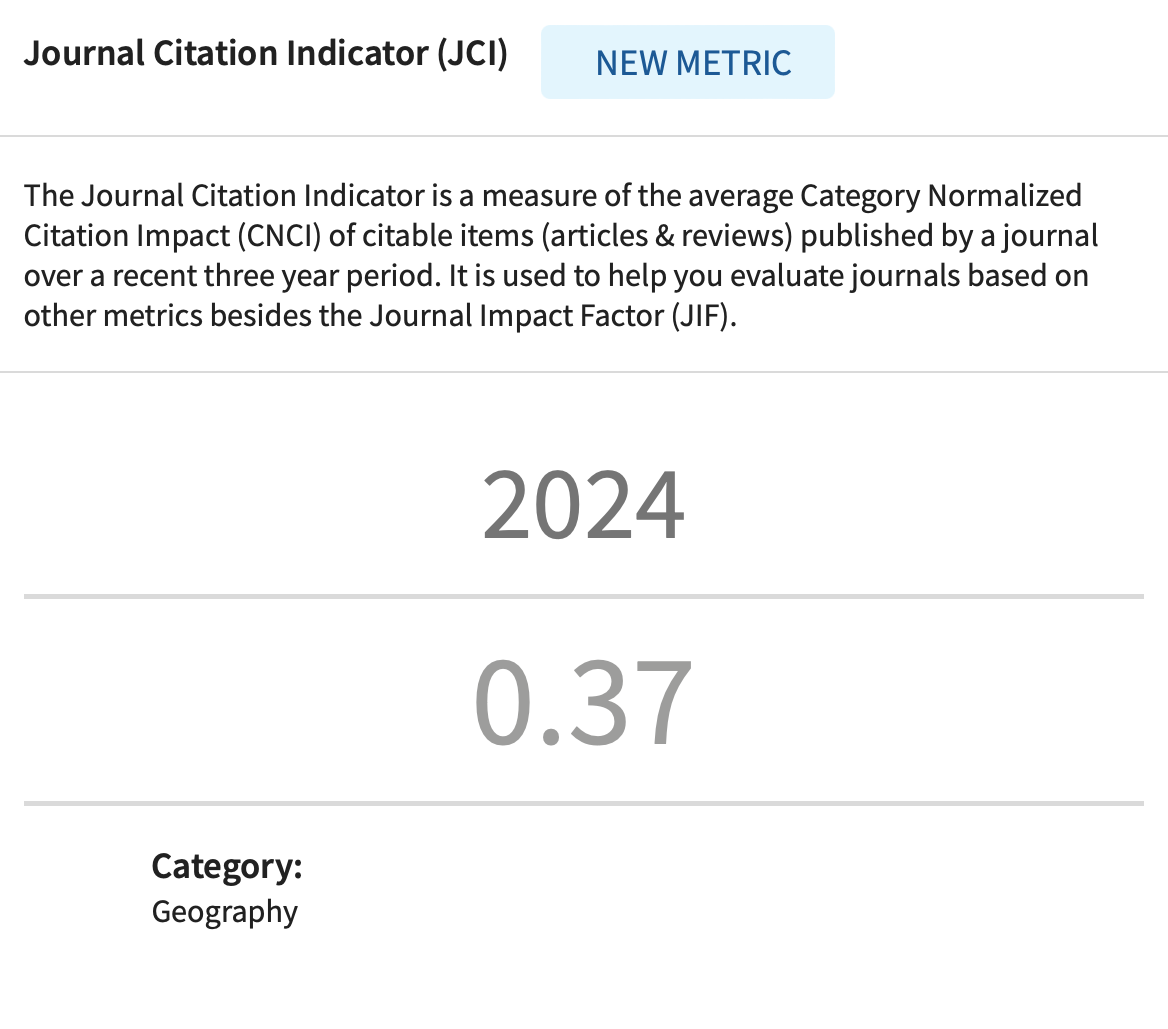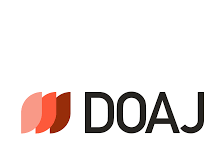TOURISM CLUSTERS IN EMERGING DESTINATIONS: PERCEIVED COMPETITIVENESS AND ECONOMIC SUSTAINABILITY
DOI:
https://doi.org/10.2298/IJGI250326016TKeywords:
tourism clusters, economic sustainability, tourist segmentation, Silk Road destination, Turkestan regionAbstract
This study examines the development and competitiveness of tourism clusters in Kazakhstan’s Turkestan region, one of the key Silk Road destination. It also explores the perceptions of tourists, local residents, and stakeholders on the development of a tourism cluster in this selected region. Cluster analysis revealed distinct visitor segments, with cultural and ecotourism as dominant demand types, alongside the differences in income, stay duration, and spending. Using Porter’s Diamond Model, the study identified challenges such as poor sectoral coordination, limited promotion, and weak institutional support. Regression analysis showed income-related variation in preferences, while SWOT analysis underscored the need for improved infrastructure, digital marketing, and service integration. Although sustainability outcomes were not empirically measured, the findings contribute to understanding the economic dimension of sustainability by examining stakeholder views on clustering and competitiveness. The results offer strategic guidance for policy and tourism development, emphasizing Turkestan’s cultural and ecological value within the Silk Road corridor. While sustainability was not directly measured, the outcomes offer strategic direction for enhancing the region’s competitiveness and advancing its role as a vital destination along the Silk Road.
Article metrics
References
Abishov, N., & Abishova, A. (2023). Mechanisms for the Development of Agritourism in Turkistan Region. Bulletin of the International University of Tourism and Hospitality, 2(2), 19–29. https://www.doi.org/10.62867/3007-0848.2023-2.02
Abzhalov, S., & Kozha, M. (2022). Architectural complex of Ahmed Yasawi during the history and culture of Central Asia. Türk Kültürü ve Hacı Bektaş Veli Araştırma Dergisi, 102, 143–170. https://dergipark.org.tr/en/pub/tkhcbva/issue/70334/1131992
Akbar, I., & Yang, Z. (2022). The influence of tourism revenue sharing constraints on sustainable tourism development: A study of Aksu-Jabagly Nature Reserve, Kazakhstan. Asian Geographer, 39(2), 133–153. https://doi.org/10.1080/10225706.2021.1894462
Akbar, I., Yang, Z., Han, F., & Kanat, G. (2019). The influence of negative political environment on sustainable tourism: A study of Aksu-Jabagly World Heritage Site, Kazakhstan. Sustainability, 12(1), Article 143. https://doi.org/10.3390/su12010143
Aktymbayeva, A., Nuruly, Y., Bazarbekova, M., Kulakhmetova, G., Zhakupova, A., El Archi, Y., Benbba, B., Issakov, Y., & Dávid, L. D. (2023). Advancing Tourism Destination Amidst COVID-19 in Kazakhstan: A Focus on Social Tourism Initiatives. GeoJournal of Tourism and Geosites, 50(4), 1563–1572. https://doi.org/10.30892/gtg.50435-1153
Alimova, M. T., Nasimov, A. R., & Rakhmonov, S. S. (2020). The methodology of the formation of tourist clusters: The example of the regions of Uzbekistan. PalArch’s Journal of Archaeology of Egypt/Egyptology, 17(7), 14462–14475. https://archives.palarch.nl/index.php/jae/article/view/5500
Allsop, D. B., Chelladurai, J. M., Kimball, E. R., Marks, L. D., & Hendricks, J. J. (2022). Qualitative Methods with NVivo Software: A Practical Guide for Analyzing Qualitative Data. Psych, 4(2), 142–159. http://dx.doi.org/10.13140/RG.2.2.31548.31362
Askeyev, A., & Baizholova, R. (2021). A cluster analysis of tourist sites in the regions of Kazakhstan. Journal of Environmental Management and Tourism, 12(4), 1043–1051. https://doi.org/10.14505//jemt.v12.4(52).17
Baltabayeva, A. Y., Yesbalayeva, R. Z., Shaikhystamova, M. B., Yildiz, N., & Beskempirova, A. U. (2019). Development of Turkestan from the Great Silk Road. Bulletin of the National Academy of Sciences of the Republic of Kazakhstan, 6(382), 24–33. https://doi.org/10.32014/2019.2518-1467.142
Beisenova, G. S., Burkitbayeva, B. D., Argimbaeva, A. M., Rakhymbay, G. S., & Vacandio, F. (2018). Sorption Properties of Chitosan in the Refining of Rough Indium. Eurasian Chemico-Technological Journal, 20(3), 235–241. http://dx.doi.org/10.18321/ectj727
Blashfield, R. K., & Aldenderfer, M. S. (1978). The Literature On Cluster Analysis. Multivariate Behavioral Research, 13(3), 271–295. https://doi.org/10.1207/s15327906mbr1303_2
Cao, Q., Sarker, M. N. I., Zhang, D., Sun, J., Xiong, T., & Ding, J. (2022). Tourism Competitiveness Evaluation: Evidence From Mountain Tourism in China. Frontiers in Psychology, 13, Article 809314. https://doi.org/10.3389/fpsyg.2022.809314
Cipresso, P., Giglioli, I. A. C., Raya, M. A., & Riva, G. (2018). The Past, Present, and Future of Virtual and Augmented Reality Research: A Network and Cluster Analysis of the Literature. Frontiers in Psychology, 9, Article 2086. https://doi.org/10.3389/fpsyg.2018.02086
Croce, V. (2018). With growth comes accountability: Could a leisure activity turn into a driver for sustainable growth? Journal of Tourism Futures, 4(3), 218–232. https://doi.org/10.1108/JTF-04-2018-0020
Demirović, D., Petrović, M. D., Neto Monteiro, L. C., & Stjepanović, S. (2016). An examination of competitiveness of rural destinations from the supply side perspective. Journal of the Geographical Institute “Jovan Cvijić” SASA, 66(3), 387–400. https://doi.org/10.2298/IJGI1603387D
Derlukiewicz, N., Mempel-Śnieżyk, A., Mankowska, D., Dyjakon, A., Minta, S., & Pilawka, T. (2020). How do clusters foster sustainable development? An analysis of EU policies. Sustainability, 12(4), Article 1297. https://doi.org/10.3390/su12041297
Dmitriyev, P. S., Fomin, I. A., Nazarova, T. V., & Wendt, J. A. (2021). Transport accessibility of the lake ecosystems in the North Kazakhstan region as a factor of tourism development. GeoJournal of Tourism and Geosites, 35(2), 289–296. https://doi.org/10.30892/gtg.35204-650
Doçaj, X., Domi, S., Terpollari, A., & Kadiu, E. (2018). Tourism clusters, characteristics, principles and developing theory. European Journal of Marketing and Economics, 1(3), 39–43. https://doi.org/10.26417/ejme.v1i3.p39-43
Doskhozhina, Z., & Yessekeyeva, E. (2019). Symbolic nature of Turkestan city and the Mausoleum of Khoja Ahmed Yassawi: The experience of field research. Bulletin of KazNU Series Philosophy, Culture, and Political Science, 66(4), 14–22. https://bulletin-philospolit.kaznu.kz/index.php/1-pol/article/view/905/870
Dziekański, P., Popławski, Ł., & Popławska, J. (2024). Interaction between pro-environmental spending and environmental conditions and development. Journal of the Geographical Institute “Jovan Cvijić” SASA, 74(3), 329–345. https://doi.org/10.2298/IJGI2403329D
Fang, K., Zhou, Y., Wang, S., Ye, R., & Guo, S. (2018). Assessing national renewable energy competitiveness of the G20: A revised Porter's diamond model. Renewable and Sustainable Energy Reviews, 93, 719–731. https://doi.org/10.1016/j.rser.2018.05.011
Gajić, T., Blešić, I., Petrović, M. D., Radovanović, M. M., Ðoković, F., Demirović Bajrami, D., Kovačić, S., Jošanov Vrgović, I., Tretyakova, T. N., & Syromiatnikova, J. A. (2023). Stereotypes and Prejudices as (Non) Attractors for Willingness to Revisit Tourist-Spatial Hotspots in Serbia. Sustainability, 15, Article 5130. https://doi.org/10.3390/su15065130
Gáll, J., & Strežo, M. (2019). Quantitative analysis of environment potential for cluster development in tourist regions of Slovak Republic. Geographica Pannonica, 23(3), 195–203. https://doi.org/10.5937/gp23-21375
Garda, B. (2022). An investigation on the urban tourism marketing potential of Turkestan. Balkan Near East Journal of Social Sciences, 8(2), 42–47. https://www.ibaness.org/bnejss/2022_08_02/06_Garda.pdf
Gidebo, H. B. (2021). Factors determining international tourist flow to tourism destinations: A systematic review. Journal of Hospitality Management and Tourism, 12(1), 9–17. https://doi.org/10.5897/JHMT2019.0276
Gomez-Vega, M., Herrero-Prieto, L. C., & López, M. V. (2022). Clustering and country destination performance at a global scale: Determining factors of tourism competitiveness. Tourism Economics, 28(6), 1605–1625. https://doi.org/10.1177/13548166211007598
Gorbunov, A. P., Kolyadin, A. P., Burnyasheva, L. A., Gazgireeva, L. K., & Kosenko, O. Y. (2018). Tourist and recreational clusters as organizational and economic mechanism of control of formation and development of innovative capacity of the North Caucasus Federal District. Amazonia Investiga, 7(17), 60–71. https://amazoniainvestiga.info/index.php/amazonia/article/view/326
Guizzardi, A., Stacchini, A., & Costa, M. (2022). Can sustainability drive tourism development in small rural areas? Evidence from the Adriatic. Journal of Sustainable Tourism, 30(6), 1280–1300. https://doi.org/10.1080/09669582.2021.1931256
Hall, C. M., & Page, S. J. (2016). Developing tourism in South and Central Asia: Introduction. In C. M. Hall & S. J. Page (Eds.),The Routledge Handbook of Tourism in Asia (pp. 243–260). Routledge.
Hua, H., & Wondirad, A. (2020). Tourism Network in Urban Agglomerated Destinations: Implications for Sustainable Tourism Destination Development through a Critical Literature Review. Sustainability, 13(1), Article 285. https://doi.org/10.3390/su13010285
Issakov, Y., Aktymbayeva, A., Assipova, Z., Nuruly, Y., Sapiyeva, A., Shaken, A., Pavlichenko, L., Kaliyeva, A., Plokhikh, R., & Dávid, L. D. (2023). Study of the impact of UNESCO heritage sites on sustainable tourism development: A case study of the Mausoleum of Khoja Ahmed Yasawi, Turkestan. GeoJournal of Tourism and Geosites, 51(4spl), 1717–1727. https://doi.org/10.30892/gtg.514spl12-1167
Ivanovic, S., Katic, A., & Mikinac, K. (2010). Cluster as a model of sustainable competitiveness of small and medium entrepreneurship in the tourist market. UTMS Journal of Economics, 1(2), 45–54. https://hdl.handle.net/10419/49184
Joshi, S., Sharma, M., & Kler, R. (2020). Modeling Circular Economy Dimensions in Agri-Tourism Clusters: Sustainable Performance and Future Research Directions. International Journal of Mathematical, Engineering and Management Sciences, 5(6), Article 1046. https://doi.org/10.33889/IJMEMS.2020.5.6.080
Koshim, A., Sergeyeva, A., Kakimzhanov, Y., Aktymbayeva, A., Sakypbek, M., & Sapiyeva, A. (2023). Sustainable Development of Ecotourism in “Altynemel” National Park, Kazakhstan: Assessment through the Perception of Residents. Sustainability, 15(11), Article 8496. https://doi.org/10.3390/su15118496
Kuralbayev, A., Sevim, B., & Abishev, N. (2017). Econometrical Analysis of the Demand for Entrance Tourism in Kazakhstan. International Journal of Economics and Financial Issues, 7(1), 262–268. https://docslib.org/doc/6110329/econometrical-analysis-of-the-demand-for-entrance-tourism-in-kazakhstan
Kuzior, A., Lyulyov, O., Pimonenko, T., Kwilinski, A., & Krawczyk, D. (2021). Post-industrial tourism as a driver of sustainable development. Sustainability, 13(15), Article 8145. https://doi.org/10.3390/su13158145
Larionova, A. A., Dzhandzhugazova, E. A., Chernikova, L. I., Chudnovskiy, A. D., & Faizova, G. R. (2017). The role and importance of the cluster approach in the development of domestic tourism of the Russian Federation. Journal of Environmental Management and Tourism, 8(2), 385. https://doi.org/10.14505//jemt.v8.2(18).11
Mamirkulova, G., Mi, J., Abbas, J., Mahmood, S., Mubeen, R., & Ziapour, A. (2020). New Silk Road infrastructure opportunities in developing tourism environment for residents' better quality of life. Global Ecology and Conservation, 24, Article e01194. https://doi.org/10.1016/j.gecco.2020.e01194
Mamutova, K. (2020). Destination Management Approach for Sustainable Tourism Development in Kazakhstan. Eurasian Journal of Economic and Business Studies, 2(56), 29–48. https://doi.org/10.47703/ejebs.v2i56.15
Mitroshenko, T. S. (2020). Preferences for the development of cultural and historical tourism in Kazakhstan and ways to improve it. Central Asian Journal of Innovation in Tourism Management and Finance, 1(4), 47–51. https://doi.org/10.51699/cajitmf.v1i4.67
Moldagaliyeva, А., Aktymbayeva, А., Issakov, Y., Assylbekova, A., Kenzhalin, К., Beisembinova, A., Begimova, G., & Dávid, L. D. (2024). Socio-economic significance of tourism development on the Great Silk Road (Kazakhstan section). GeoJournal of Tourism and Geosites, 52(1), 116–124. https://doi.org/10.30892/gtg.52111-1188
Mooi, E., Sarstedt, M., & Mooi-Reci, I. (2018). Regression analysis. In E. Mooi, M. Sarstedt, & I. Mooi-Reci (Eds.), Marketing Research: Process, Data, and Methods Using Stata (pp. 215–263). Springer. https://doi.org/10.1007/978-981-10-5218-7
Mukhambetov, T. I., Janguttinav, G. O., Esaidar, U. S., Myrzakulova, G. R., & Imanbekova, B. T. (2014). The life cycle of sustainable eco-tourism: A Kazakhstan case study. WIT Transactions on Ecology and the Environment, 187, 39–49. https://doi.org/10.2495/ST140041
Nakhipbekova, S., Sadykov, Z., Abdiqadyr, N., Dzhaksilikov, A., & Kazakbayeva, T. (2023). Determination of the Role of Elements Affecting the Formation of the City Image of Turkestan. Eurasian Journal of Economic and Business Studies, 67(3), 72–84. https://doi.org/10.47703/ejebs.v3i67.266
Niyazbayeva, A., & Yessengeldina, A. (2016). Analysis of tourism cluster development: Kazakhstan experience. Journal of Environmental Management and Tourism, 7(3), 519–525. https://journals.aserspublishing.eu/jemt/article/view/363
Nurmukhamedova, S. S., & Myrzakhan, N. D. (2023). Тúrkistan qalasyndaǵy týrıstik obektileriniń búgini men bolashaǵy [Present and future of tourist attractions in Turkestan]. Bulletin of International University of Tourism and Hospitality, 1(1), 86–98. https://journal.iuth.edu.kz/index.php/main/article/view/21
Nurmaghanbetkyzy, N., Zhakupov, A., & Berikkyzy, K. (2025). Small Towns of the Turkestan Region: As a Factor of Sustainable Development of Tourism in the Region. Bulletin of the International University of Tourism and Hospitality, 1(7), 175–186. https://www.doi.org/10.62867/3007-0848.2025-1.15
Phillips, M., & Lu, J. (2018). A quick look at NVivo. Journal of Electronic Resources Librarianship, 30(2), 104–106. https://doi.org/10.1080/1941126X.2018.1465535
Porter, M. E. (1990). New global strategies for competitive advantage. Planning Review, 18(3), 4–14. https://doi.org/10.1108/eb054287
Pratt, S. (2015). The Borat Effect: Film-Induced Tourism Gone Wrong. Tourism Economics, 21(5), 977–993. https://doi.org/10.5367/te.2014.0394
Priatmoko, S., Kabil, M., Akaak, A., Lakner, Z., Gyuricza, C., & Dávid, L. D. (2023). Understanding the Complexity of Rural Tourism Business: Scholarly Perspective. Sustainability, 15(2), Article 1193. https://doi.org/10.3390/su15021193
Puyt, R. W., Lie, F. B., & Wilderom, C. P. (2023). The origins of SWOT analysis. Long Range Planning, 56(3), Article 102304. https://doi.org/10.1016/j.lrp.2023.102304
Rakhmetulina, J. B., & Omurzakov, A. (2018). Internet-advertising as a factor of competitiveness of hotel business in Kazakhstan. Central Asian Economic Review, 1, 93–100. https://caer.narxoz.kz/jour/article/view/279
Rodríguez-Díaz, B., & Pulido-Fernández, J. I. (2019). Sustainability as a Key Factor in Tourism Competitiveness: A Global Analysis. Sustainability, 12(1), Article 51. http://dx.doi.org/10.3390/su12010051
Santos, V., Sousa, M. J., Costa, C., & Au-Yong-Oliveira, M. (2021). Tourism towards Sustainability and Innovation: A Systematic Literature Review. Sustainability, 13(20), Article 11440. http://dx.doi.org/10.3390/su132011440
Seken, A., Mazbayev, O., Agybetova, R., Akimov, Z., & Tleubayeva, A. (2019). Research on the development model of cross border Kazakh ethnic cultural tourism. Journal of Environmental Management and Tourism, 9(8), 1751–1759. https://doi.org/10.14505//jemt.v9.8(32).14
Shah, S. A., & AhmadWani, M. (2014). Impact of conflict on tourist flow and spatial distribution of tourists in Kashmir Valley. World Applied Sciences Journal, 31(6), 1160–1167. https://doi.org/10.5829/IDOSI.WASJ.2014.31.06.4
Streimikiene, D., Svagzdiene, B., Jasinskas, E., & Simanavicius, A. (2021). Sustainable tourism development and competitiveness: The systematic literature review. Sustainable Development, 29(1), 259–271. https://doi.org/10.1002/sd.2133
Tiberghien, G. (2019). Managing the Planning and Development of Authentic Eco-Cultural Tourism in Kazakhstan. Tourism Planning & Development, 16(5), 494–513. https://doi.org/10.1080/21568316.2018.1501733
Tokbergenova, U. A., Abdimanapov, B. S., & Tokpanov, E. A. (2023). Geographical Prerequisites for the Development of Tourism in Kazakhstan. Journal of Geography & Environmental Management, 68(1), 117–124. https://doi.org/10.26577/JGEM.2023.v68.i1.010
Tóth, G., Dávid, L. D., & Vasa, L. (2014). The role of transport in European tourism flows. Acta Geographica Slovenica, 54(2), 311–320. https://doi.org/10.3986/AGS54205
Tuyakbayev, M., Saipov, A., & Dmitriyev, Yu. (2021). Architectural and Construction Characteristics of The Old Turkestan Pantheon Buildings for Their Dating and Identification. Industrial Technology and Engineering, 2(39), 53–63. https://www.elibrary.ru/item.asp?id=46344146
Wendt, J. A. (2020). Directions and Area of Tourism Research in Kazakhstan. GeoJournal of Tourism and Geosites, 32(4), 1418–1424. https://doi.org/10.30892/gtg.32433-589
Zharkenova, B., Mukanov, A., Mussina, K., Mutaliyeva, L., Sagatbayev, Y., & Pashkov, S. (2023). Branding of tourist cluster systems: Case of Almaty Mountain Cluster in the Republic of Kazakhstan. GeoJournal of Tourism and Geosites, 49(3), 1152–1164. https://doi.org/10.30892/gtg.49330-1114
Zhoya, K., Issakov, Y., Kaimuldinova, K., Sarkytkan, K., Ussenov, N., Muzdybayeva, K., & Dávid, L. D. (2024). Structural model of formation of geoecological competence of tourism students. Journal of Geography in Higher Education, 48(4), 1–25. https://doi.org/10.1080/03098265.2023.2298321
Downloads
Published
How to Cite
Issue
Section
License
Copyright (c) 2025 Journal of the Geographical Institute “Jovan Cvijić” SASA

This work is licensed under a Creative Commons Attribution 4.0 International License.











